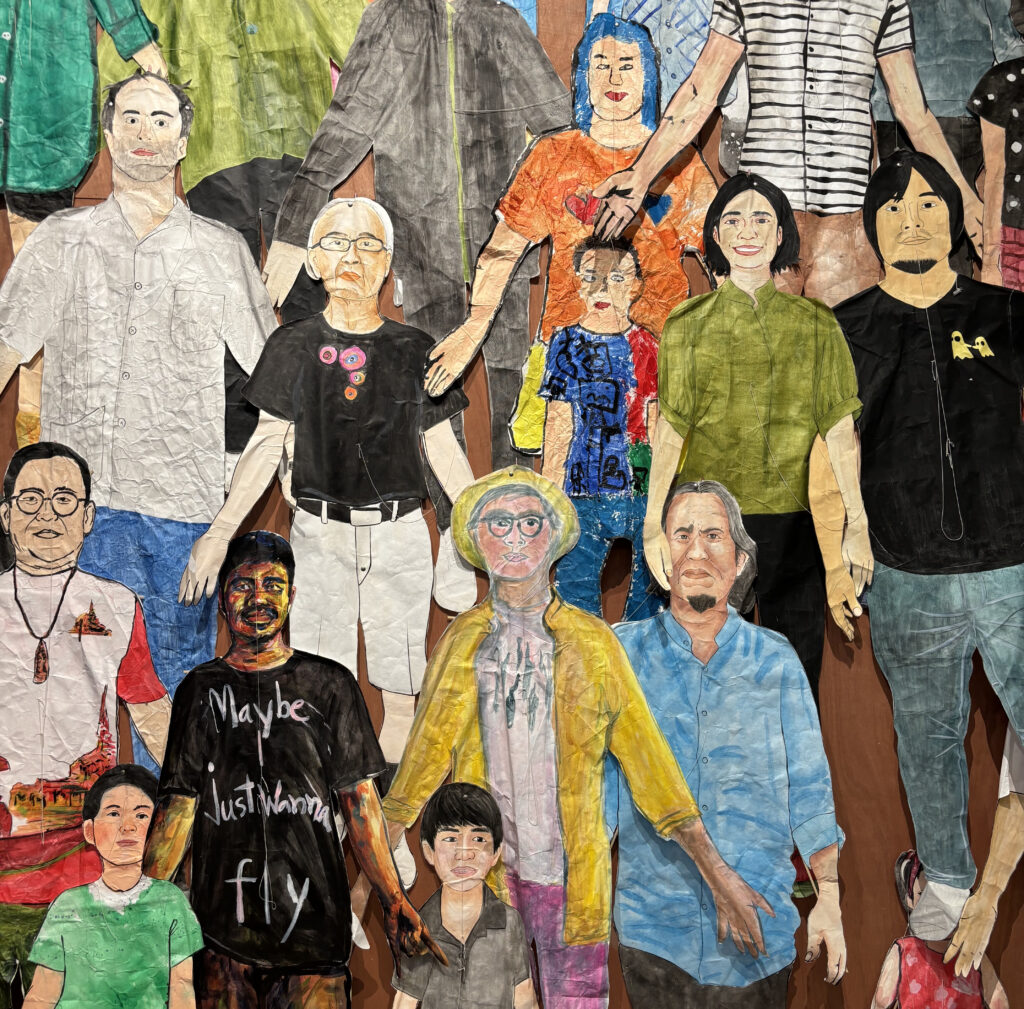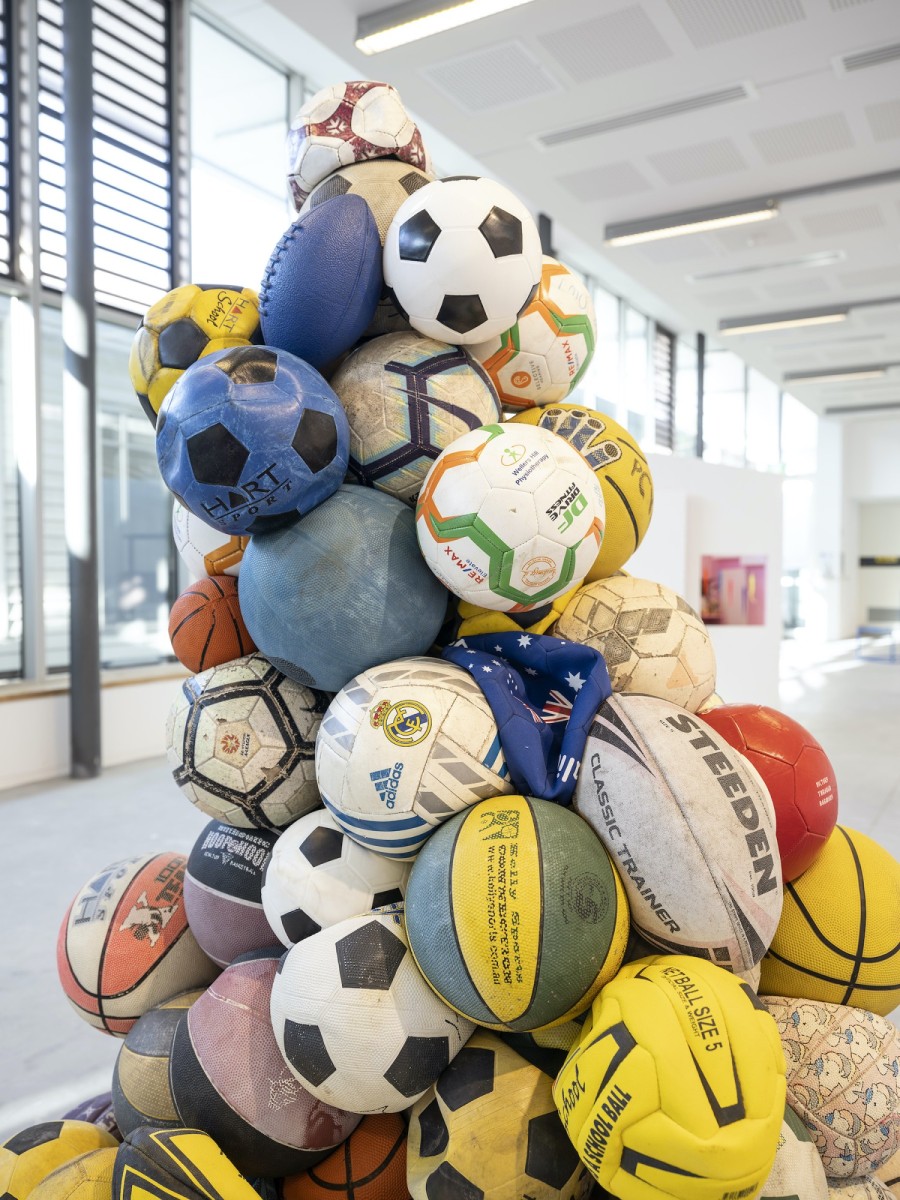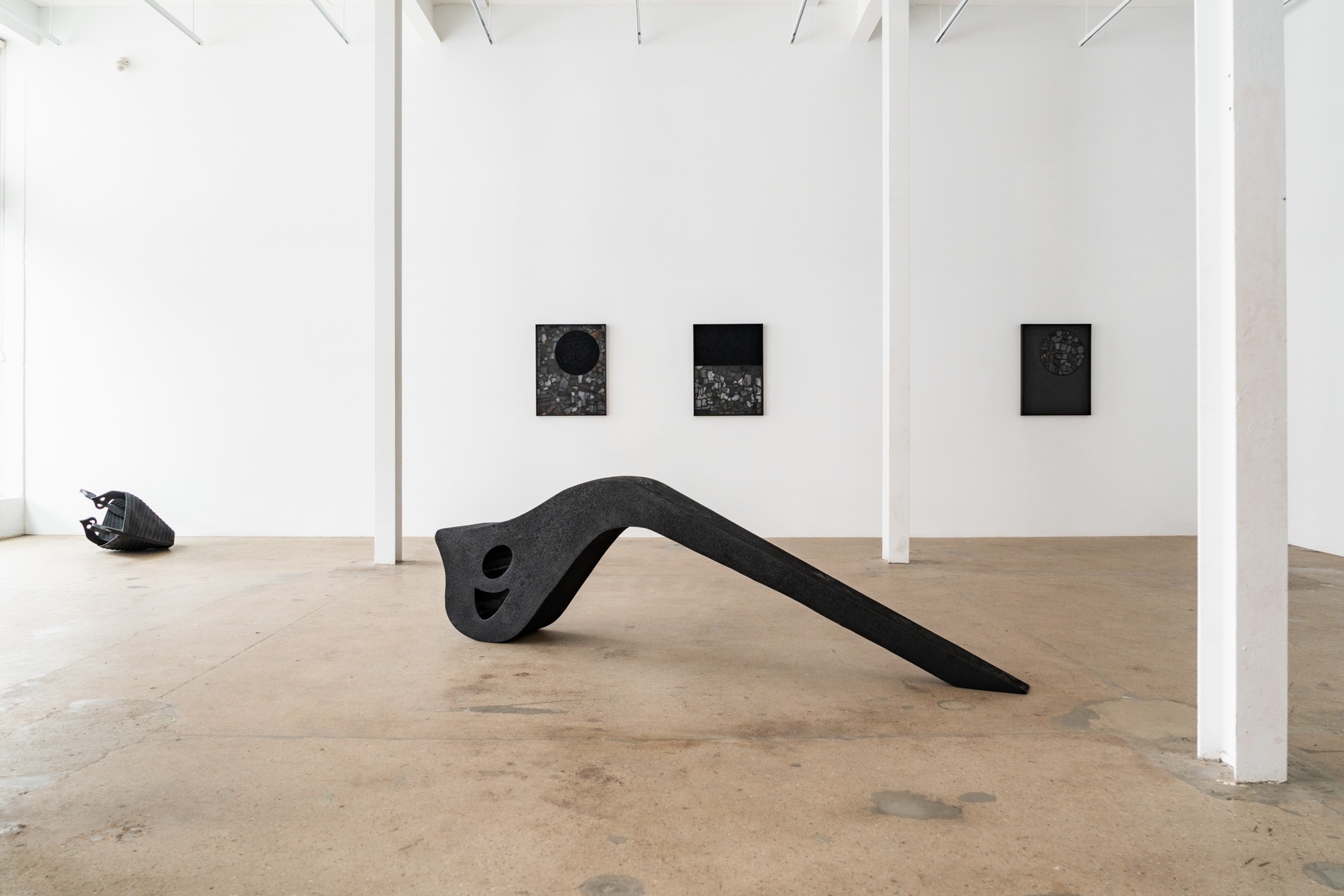June 19, 2024

In March this year, I had the opportunity to attend the Thailand Biennale. I spent three days absorbing as much as I could across the many venues and pavilions. The Thailand Biennale follows an unusual model in that every edition takes place in a different province. By changing locations, it aims to decentralise Thailand’s contemporary art scene and highlight local sites and culture. While the first two editions were held in Krabi (2018) and Korat (Nakhon Ratchasima) (2021), the most recent edition took place in the country’s northernmost province, Chiang Rai.
The Biennale was shaped by artistic directors Gridthiya Gaweewong and Rirkrit Tiravanija, alongside curators Angkrit Ajchariyasophon and Manuporn Luengaram. On an early site visit to Wat Pa Sak, an ancient temple in Chiang Rai, the curatorial team were captivated by a statue of Buddha in the open-world posture: standing on a lotus flower with his arms at his sides and hands slightly raised. The posture represents Buddha descending from Tavatimsa Heaven and opening the three worlds of heaven, earth, and hell for all beings to witness one another. After encountering this symbol of wisdom and awakening, the team embraced it as the theme for the Biennale: ‘Open World.’1
In the post-pandemic landscape, the theme Open World encouraged a renewed sense of global awareness and connectivity. As the curatorial team explained, they selected it to “expand people’s perception of art and foster connections with contemporary global issues such as history, ethnicity, cross-border migration, and the ecological system.”2 Although the theme emphasised international engagement, the Biennale remained rooted in the local context of Chiang Rai.
Chiang Rai has a long and complex history. Bordering Laos and Myanmar, the province is an important site for intra-Asian connectivity. The city proper is situated in the basin of the Kok River (a tributary of the Mekong River). Over the centuries, it has navigated the ebb and flow of geopolitical currents. Founded as the capital of the Mangrai Dynasty in the thirteenth century, the city fell under Burmese occupation for hundreds of years, later becoming part of Siam, now Thailand.3
The Biennale used this historical backdrop of Chiang Rai as a springboard to broader concerns. There were 17 venues and 13 pavilions scattered throughout the province, featuring the works of more than 60 artists from 21 countries. Included were established names like Apichatpong Weerasethakul and Tomás Saraceno; esteemed local craftspeople including Chata Maiwong and Somluk Pantiboon; and early career practitioners such as Busui Ajaw and Kamonlak Sukchai. The artists embraced a diversity of artforms—from painting and sculpture to architecture and film. Although I wish I had been able to see every work, I made the best of the time I had. Of the works I did see, one project by Japanese artist Shimabuku truly embodied the ‘Open World’ spirit of the Biennale.
As an artist, Shimabuku searches for moments of wonder and humour in the everyday. His practice encompasses a wide range of media including film, photography, and sculpture. Born in Kobe and based in Okinawa, Shimabuku has spent the past three decades travelling the world, conversing with strangers and communing with nature. He draws heavily from these interactions, creating whimsical and warm-hearted works that inspire empathy between people, cultures, and nature.


At the Biennale, Shimabuku debuted a community-based project called Flying People (2023). The artist initiated the project after creating a life-size kite in his own image. He felt a sense of elation flying the kite that he wanted to share with others. In the first week of December last year, Shimabuku held a series of workshops with Chiang Rai residents and visitors in the city’s Tobacco Warehouse. One hundred and twenty people made their own kites, and at the end of the week, gathered in Singha Park to fly them.
When I visited the Biennale, the kites had been transported back to the Tobacco Warehouse. Exploring the venue, I encountered a small group of kites arranged to look like people levitating above the ground. Turning the corner, I was taken aback by an overwhelming mass of one hundred kites, tightly packed together. My eyes were pulled in every direction. The makers of the kites were illustrated in a broad range of clothes—from bright yellow shirts and bold red dresses to basic white tees and pale blue jeans. Most of the makers were smiling and had their arms slightly raised. I even recognised a few faces, including the curators of the Biennale. Nearby was a video of the kites being flown.
Flying People is equal parts joyful, humorous, and poetic. The project centres the local community, with the workshops encouraging people from all walks of life to connect. As soon as the kites were released into the ‘open world’, they entered into a dance with nature. Depending on the weather, they could be picked up by a breeze, tossed and twisted by a gale, or be forced into a crash landing. The project invited deeper consideration of how we perceive, relate to, and interact with the environment. Moreover, it demonstrated the importance of coming together as a community and shining a light on issues that affect us all.

Viewing Flying People, I was also reminded of a project I had the pleasure of working on at Museum of Brisbane as part of BrisAsia Festival this year. As Artists in Residence, Christine Ko and Louis Lim presented a new iteration of their ongoing project Departure (2022–present). They spent several months working with members from Brisbane migrant communities to translate their stories into kites. Christine and Louis were drawn to kites as a symbol of the migrant experience, for they evoke “flights of joyous and naive childlike wonder and optimism that is simultaneously at the whim of external circumstances . . . sometimes lead[ing] to deep disappointment (crash landing).”4 Similar to Shimabuku, Christine and Louis saw their project contributing to broader conversations, in this case around immigration and race.
The latest edition of the Thailand Biennale opened my eyes to creative practices across Asia, but also to Chiang Rai itself. Exploring the province through the lens of artistic practice was both educational and inspiring, reminding me of the importance of community and place in navigating our global world.
This project has been assisted by the Australian Government through Music Australia and Creative Australia, its principal arts investment and advisory body; Public Galleries Queensland; and Museum of Brisbane.
- “Concept,” Thailand Biennale: Chiang Rai 2023, accessed 26 May 2024. ↩︎
- “Guidebook,” Thailand Biennale: Chiang Rai 2023, accessed 26 May 2024. ↩︎
- Hans Penth, “On the History of Chiang Rai,” Journal of the Siam Society 77, no. 1 (1989): 11 and 15. ↩︎
- “Artists in Residence: Christine Ko and Louis Lim,” Museum of Brisbane, accessed 26 May 2024. ↩︎
Elena Dias-Jayasinha is a Meanjin/Brisbane-based curator and writer. She is currently Curator at Museum of Brisbane.



